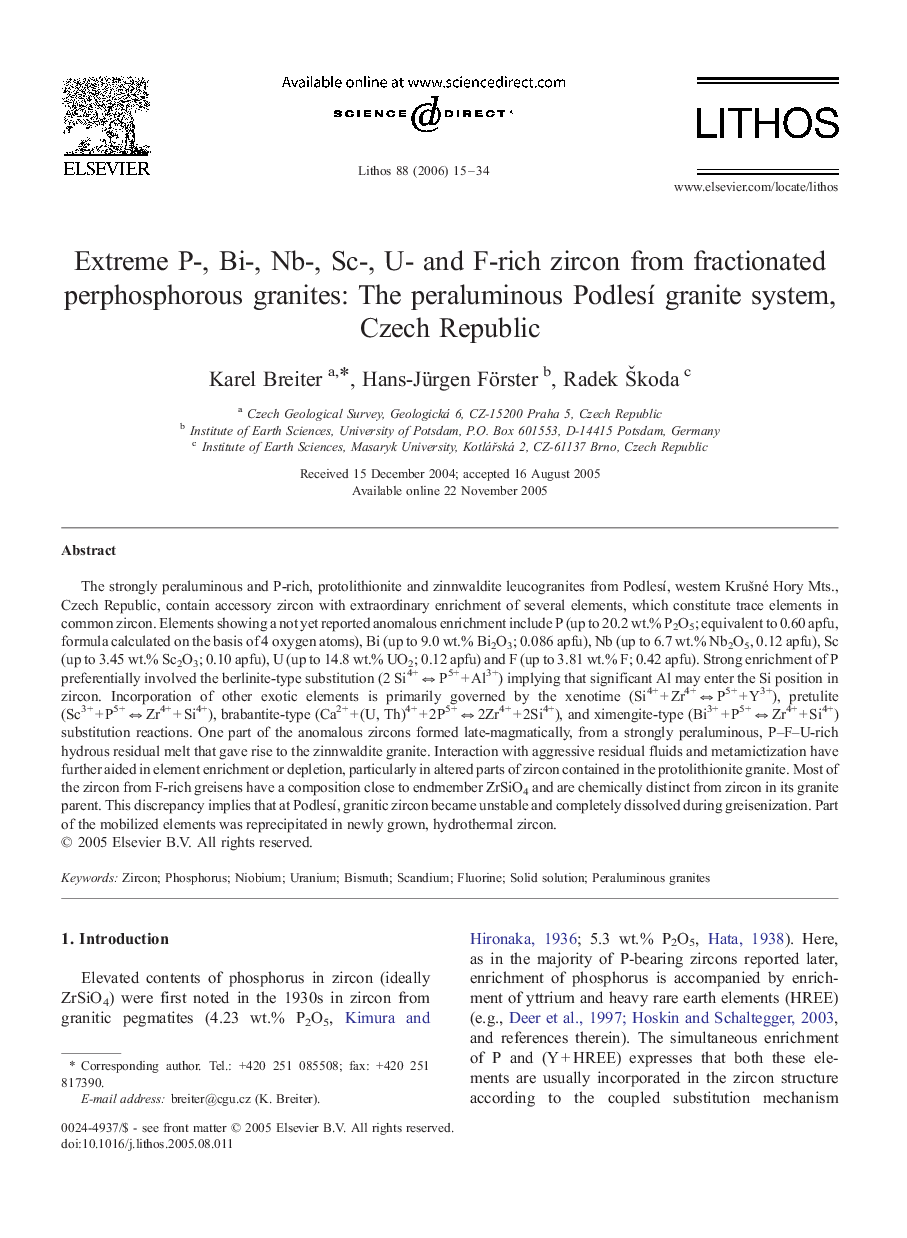| Article ID | Journal | Published Year | Pages | File Type |
|---|---|---|---|---|
| 4717992 | Lithos | 2006 | 20 Pages |
Abstract
The strongly peraluminous and P-rich, protolithionite and zinnwaldite leucogranites from PodlesÃ, western KruÅ¡né Hory Mts., Czech Republic, contain accessory zircon with extraordinary enrichment of several elements, which constitute trace elements in common zircon. Elements showing a not yet reported anomalous enrichment include P (up to 20.2 wt.% P2O5; equivalent to 0.60 apfu, formula calculated on the basis of 4 oxygen atoms), Bi (up to 9.0 wt.% Bi2O3; 0.086 apfu), Nb (up to 6.7 wt.% Nb2O5, 0.12 apfu), Sc (up to 3.45 wt.% Sc2O3; 0.10 apfu), U (up to 14.8 wt.% UO2; 0.12 apfu) and F (up to 3.81 wt.% F; 0.42 apfu). Strong enrichment of P preferentially involved the berlinite-type substitution (2 Si4+ â P5+ + Al3+) implying that significant Al may enter the Si position in zircon. Incorporation of other exotic elements is primarily governed by the xenotime (Si4+ + Zr4+ â P5+ + Y3+), pretulite (Sc3+ + P5+ â Zr4+ + Si4+), brabantite-type (Ca2+ + (U, Th)4+ + 2P5+ â 2Zr4+ + 2Si4+), and ximengite-type (Bi3+ + P5+ â Zr4+ + Si4+) substitution reactions. One part of the anomalous zircons formed late-magmatically, from a strongly peraluminous, P-F-U-rich hydrous residual melt that gave rise to the zinnwaldite granite. Interaction with aggressive residual fluids and metamictization have further aided in element enrichment or depletion, particularly in altered parts of zircon contained in the protolithionite granite. Most of the zircon from F-rich greisens have a composition close to endmember ZrSiO4 and are chemically distinct from zircon in its granite parent. This discrepancy implies that at PodlesÃ, granitic zircon became unstable and completely dissolved during greisenization. Part of the mobilized elements was reprecipitated in newly grown, hydrothermal zircon.
Related Topics
Physical Sciences and Engineering
Earth and Planetary Sciences
Geochemistry and Petrology
Authors
Karel Breiter, Hans-Jürgen Förster, Radek Å koda,
